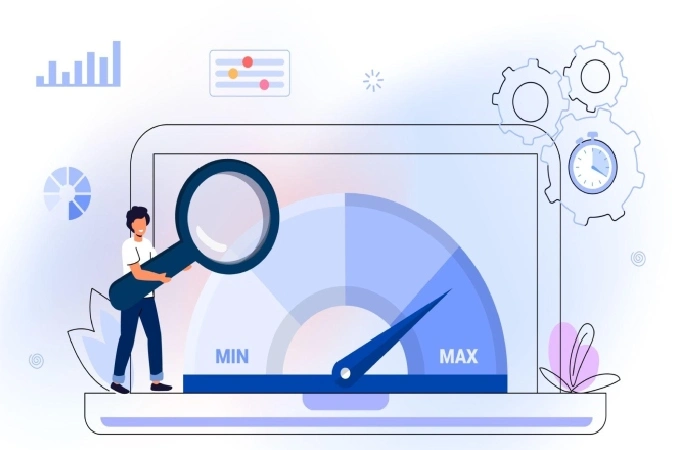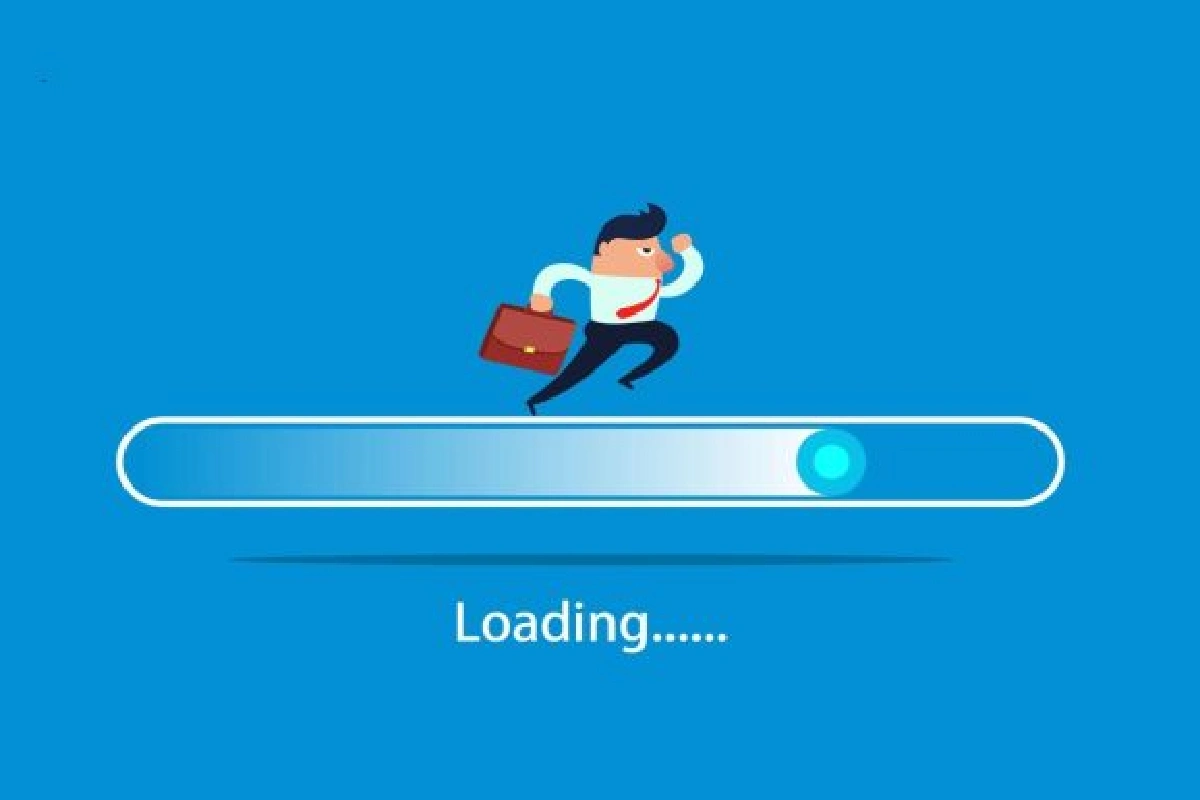About Why Upload Speed is Essential
Why Upload Speed is Essential: Upload speed becomes much more critical when using video chat, uploading high-resolution pictures, or streaming live video from home. Slow ADSL upload speeds will be problematic if you often customize your home network for work, school, or streaming.
Almost all Internet Service Providers (ISPs) propose several strategies, each with different upload and download hurries. Which one should you choose if you want a new internet facility? Do you always choose the wildest you can pay?
Home internet speeds have increased rapidly in recent years, leaving many people with premium internet plans that offer more than they could use. But what are good download and upload speeds for you? Of course, you don’t want to pick a project that’s faster than you need to be, so we’ll break down the details so you can choose the right plan.
What is Upload Speed?

Upload speed is the haste at which data can be conveyed from your computer to the Internet. This differs from download speed, which is how data can be accessed from the Internet to your computer.
Most of what you do online includes downloading, from loading a simple web page to viewing a 4K video on Netflix. As a result, broadband businesses place a high value on download speeds. At the same time, you are also continually charging. Your computer uploads data packets to Internet websites and services when you talk.
Everything from file or photo sharing in the cloud to live video chats, gaming, and conferencing uses upload speed. Upload speeds are restrained in megabits per second or Mbps, just like download speeds.
Why Upload Speed is Essential? 5 Aspects
The computer, like most people, can be used for various purposes, from checking email to streaming your favorite show. But if your loading speed is slow, you may find some of these tasks frustrating for taking too long. The following points explain why loading speed is essential in five different aspects.
1. Online Gaming and Streaming
Your upload speed is vital for gaming as it controls how fast your computer can send data to the game attendant. The higher your upload speed, the less lag you will know.
Games are getting interactive these days, and you can communicate with your friends or other players while playing the game. Therefore, it is essential to consider how quickly information from your computer or game console can reach a remote server. There are two kinds of stuff to reflect on regarding gaming and upload speeds: ping and latency.
Ping is your computer’s time to send data to the game server and get a response. Lower ping means faster response time and less lag.
Conversely, dormancy is when data travels from your computer to the associated game. The lesser the latency, the less postponement you will be involved in. So, if you want lag-free gaming knowledge, you need a low-ping, low-latency internet connection.
Because of this, a high-speed connection is energetic for gaming. A slow or unreliable linking can cause lag that can be pretty trying, particularly when you’re in a decisive battle, and you’ll sign even more lag. When playing games from an external hard drive.
For serious gamers, you need an internet connection with high upload speed. For this reason, a wired connection with a reasonably long Ethernet cable leading to the PC tower is recommended for gaming.
2. Video Conference
Like gaming, streaming, and extra online activities, your loading speed is crucial for video conferencing and when making VoIP and video calls with Zoom or Microsoft Teams. In addition, the quality of your live call is based on your Internet connection and the connections of other participants.
You may experience lag or buffering when live streaming or in a video call if you have a wild download speed but a slow upload speed. Also, other meeting participants may not be able to see or hear you correctly, making it challenging to participate in the discussion or the meeting.
For your video conferences to be successful, you need a decent upload speed from your Internet connection or business intranet. Therefore, it would aid if you had an Internet connection with an upload speed of at least 2 Mbps and around 5-8 Mbps for business meetings and other purposes.
3. Live Stream
People love to watch live streams on different platforms like Twitch and YouTube. However, for smooth live streaming, you need excellent loading speed, and a slow upload speed can result in choppy video quality or long buffer times.
To avoid these issues when streaming live, you need at least 0.35 Mbit/s for SD quality or three to four Mbit/s for HD-quality video. In addition, for best results, you should have an upload speed of more than five Mbps when the connection from the Ethernet port is most effective.
There are two things to consider when live streaming: bitrate and resolve. Bitrate is the amount of bits per second transmitted from your computer to the Internet—the more advanced the bitrate, the better the class of your live stream.
On the other hand, the drive is the number of pixels that make up your live watch. Higher resolution means a sharper, stronger image but also usages more bandwidth. So, if you are streaming live in high resolution, you want a higher loading speed to avoid pixelation, buffering, and frozen video.
4. Upload and Backup Files
You can download games and files from the Internet, but what about uploading? Every time you upload a file to Google Drive or Dropbox, it needs to be transferred from your device to its type of storage server. The process works equally when you attach a file to an email.
The speed of this procedure depends on your upload speed. If you are uploading a large file, e.g., B. a document, PPT, or archived files, and its upload speed is slow, it will take more time to complete the transfer.
Fast upload speed is critical if you want to back up your computer regularly. When you need to back up many files, slow upload speed can make the process take a long time.
5. Social Media Posts
If you’re on social media, you know that images and videos are a big part of the knowledge. So, it must be transferred from your expedient to their attendant whenever you upload a photo or video to Facebook, Instagram, or Snapchat.
If you are annoyed with uploading a large file, e.g., B., an HD video or high-resolution photos, it depends on how fast your Internet connection is uploading. If it’s slow, it can be trying when you’re in a hurry or have a lot of records to upload.
Also, it would aid if you had a fast upload speed to live stream on social media. The voluntary minimum for live watching is 3 Mbps, but if you need to watch high-quality video, you should have at least 5 Mbps upload speed.
We hope that all your questions about upload speed will be answered. However, if you still doubt it, the following frequently asked questions will clear all your doubts:
Upload and Download Speed
Upload speed is the amount of data you can send in a given second. Download speed is the amount of data you can accept in one second. The computer first sends a request to download a web page, and the website processes the appeal and sends you the side. In this example, the uploaded information is small, likened to the downloaded data.
Advantages of High Internet Upload Speed

The must-have feature for most home internet users is good download speed, as it affects streaming services like Netflix, Amazon Prime, and Hulu. However, many business users require both download and upload performance, and they are not only consumers of data but also supply it in significant quantities. Business applications that require high upload speeds include the following examples:
- Hard drive backups
- Web hosting at home
- Attachments in outgoing emails
- Cloud applications: Google Docs, Dropbox, iCloud
- Voice over IP (VoIP) phone service
- Skype and FaceTime
Load Speeds by the Quantities
At the time of publication, a good broadband Internet connection will get you to upload speeds of 50 Mbps or more. At the low end, essential services can offer maximum upload speeds as low as 256,000 bits per second (Kbps). The service provider’s technology usually determines upload speed performance, with services like digital subscriber line (DSL) and satellite among the slowest and fiber optic among the fastest.
Shared Upload Speeds
Even in small businesses, it is common to have multiple Internet users, and Load-intensive applications pose an even bigger problem when few users are proceeding with your network. For example, if the upload bandwidth is also low, a single VoIP call can cause the web and other services to lag. As the average business puts more load on a typical Internet connection in both directions, enabling simultaneous and continuous uploads becomes increasingly essential.
The Best for Your Budget
Even though high upload speeds are desirable for a small business, such a service is more exclusive than those with more modest upload performance. Exactly how much you require depends on how you use your Internet, and a lower upload rate will work for organizations that only need basic web browsing, email, and video. More data-hungry services like the ones detailed above will create a need for good upload speeds. Most service providers offer relatively easy upgrades if needed, and you can start with more straightforward service and expand as your needs grow.
Conclusion
Upload speed is the haste your Internet connection needs to send data from your device to another device or the Internet. Upload speeds are relevant for video chats, downloading large files, or streaming live video.
Also Read: Why Multiple Browsers – Multiple Browsers Is A Key in the Network



